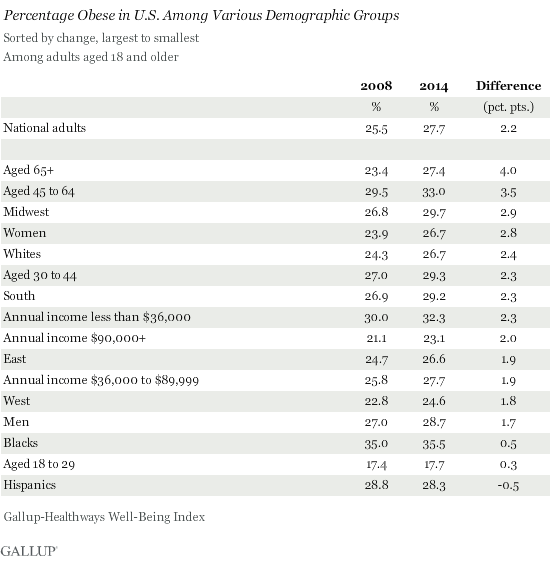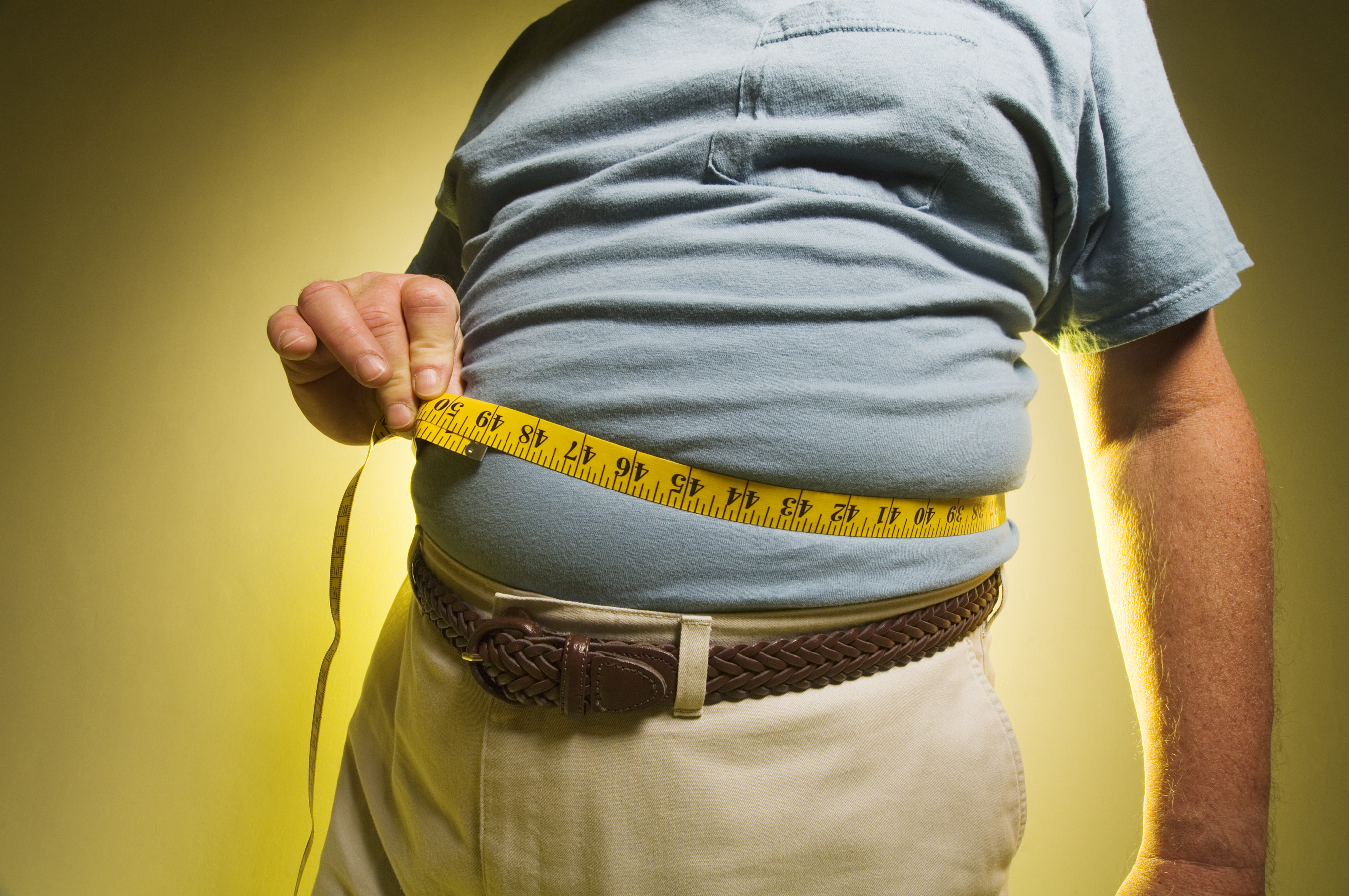Transparency is extremely important to us, so we are letting you know that we may receive a commission on some of links you click on from this page. See our disclaimer.
 More news that obesity continues to be a major — and growing — problem in the U.S.
More news that obesity continues to be a major — and growing — problem in the U.S.
A new Gallup report states that “the percentage of U.S. adults who are obese continued to trend upward in 2014, reaching 27.7%. This is up more than two percentage points since 2008 and is the highest obesity rate Gallup and Healthways have measured in seven years of tracking it. More Americans who were previously overweight have now moved into the obese category, while the percentage who are at normal weight has remained stable since 2013.”
In terms of demographic breakdowns, “although the obesity rate among blacks has not changed much since 2008, this group has the highest obesity rate of any major demographic group, at 35.5%. Obesity rates also exceed 30% among Americans aged 45 to 64 and those earning less than $36,000 per year. Young adults aged 18 to 29 are the least likely to be obese (17.7%), followed by those earning at least $90,000 per year (23.1%).”
An additional problem is that as people become more obese, they register lower levels of well-being: “As Americans become more obese, their well-being declines significantly, as measured by Gallup-Healthways Well-Being Index scores. Adults in obese class III, those considered morbidly obese, had the lowest average well-being of any weight group, at 50.9, in 2014. This compares with 54.7 for those in obese class II and 57.5 for those in obese class I.”
One noteworthy implication from the report: “With the obesity rate increasing across nearly all demographic groups since 2008, it is imperative for employers, public health officials and individuals themselves to act to reverse the trend. However, given the link between lower well-being and obesity, these actions should focus on more than just diet and exercise.”

0 Comments